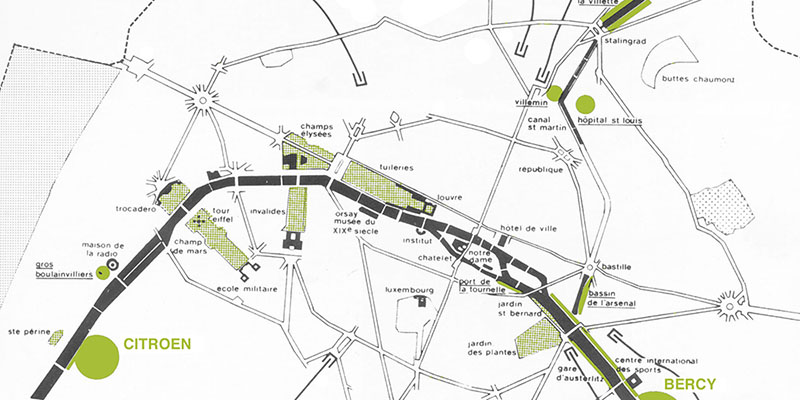Late twentieth century green infrastructures in Paris
Downloads
DOI:
https://doi.org/10.7480/rius.3.838Abstract
The appreciation of green infrastructures as ‘nature’ by urban communities presents a critical challenge for the green infrastructure concept. While many green infrastructures focus on functional considerations, their refinement as places where concepts of nature are represented and where nature can be experienced and understood, has received little attention in research and praxis. Contemporary urban societies entertain varied and distinctive ideas on nature and their relationship to it, themes explored in contemporary urban park and garden design. These projects can provide insights into the representation, comprehension and experience of nature in green infrastructures. This article expands on contemporary conceptions of nature in urban parks and urban gardens such as those realised in Paris between 1980 and 2000. The projects all display articulated expressions of conceptions of nature, reflecting both a return to the classical garden tradition, as well as elaborations of nature via the sensorial, ‘abundant nature’ and nature as process. These conceptions can be positioned within the theoretical framework of three forms of nature – first nature (wilderness), second nature (cultural landscape) and third nature (garden). In Paris, contemporary parks and gardens not only express new forms of nature, they also form part of a green infrastructure network in their own right. As a series of precise moments connected by rivers and canals, this network differs markedly from prevailing green infrastructure models. The network of parks and gardens in Paris represents a green infrastructural network made up of a layering of historical and contemporary elements connected in compound ways. The completeness of representations and elaborations of nature – gathered in the three natures – can be dissected and spread out over different constructed landscapes in the city, and it is up to the green infrastructure to unite them.
How to Cite
Published
Issue
Section
License
Copyright (c) 2015 Rene van der Velde, Saskia de Wit

This work is licensed under a Creative Commons Attribution 4.0 International License.
References
Aben, R. & S. de Wit (1999) The Enclosed Garden: History and development of the Hortus Conclusus and its reintroduction into the present-day urban landscape. Rotterdam, 010 Publishers
Atelier Parisien d’Urbanisme (1981) Les espaces vert de Paris: situation et projets. Paris, APUR
Baljon, L. (1992) Designing Parks. Amsterdam, Architectura & Natura Press
Benedict, M.A. & E.D. McMahon (2006) Green Infrastructure: linking landscapes and communities. Washington, Island Press
Berrizbeitia, A. (2007) ‘Re-placing Process’, in: J. Czerniak & G. Hargreaves (eds.) Large Parks. New York, Princeton Architectural Press,
Bucher, A. (2006) ‘Der Stadtpark – das sinnlich erfahrbare Anderswo’, in: Pamphlet 6 Theorie: Der Stadtpark. Zurich, Publikationsreihe des Instituts für Landschaftsarchitectur ILA, ETH,
Clément, G. (1995) ‘Identity and Signature’, in: Topos European Landscape Magazine 11
De Jong, E. & M. Dominicus-Van Soest (1999) ‘De tuin als beschavingsoffensief’, in: Aardse Paradijzen: De tuin in de Nederlandse kunst 1770-2000. Haarlem, Exhib. cat. Frans Halsmuseum
Etablissement Public du Parc de la Villette (1982) Parc de la Villette concours international: Rapport d’objectifs. Paris, EPPV
Fábos, J.G. (1995) Introduction and overview: the greenway movement, uses and potentials of greenways. Landscape and Urban Planning 33, 1-3
Garcias, J. (1993) Un Lustre Après, Le Concours Citroën Revisité. Paris Projet Numéro 30-31: Éspace Publique, 111-114
Granö, J.G. (1929) Reine Geographie. Eine methodologische Studie beleuchtet mit Bespielen aus Finnland und Estland. Acta Geographica II: 2. Translated to English by M. Hicks (1997) Pure Geography. Baltimore, The Johns Hopkins University Press
Hunt, J.D. (2000) Greater perfections: The practice of garden theory. Philadelphia, University of Pennsylvania Press
Kaplan, R. & S. Kaplan (1989) The Experience of Nature: A Psychological Perspective. New York, Cambridge University Press
Kegel, K., F. Schokkenbroek & C. Steenbergen (1983) Parc de la Villette: Nederlandse Inzendingen. Delft, Delft University of Technology Publications Office
Little, C.E. (1990) Greenways for America. Baltimore, John Hopkins University Press
Mell, I.C. (2010) Green infrastructure: concepts, perceptions and its use in spatial planning. PhD thesis, University of Newcastle, School of Architecture, Planning & Landscape
Meyer, E.K. (1991) The Public Park as Avant-Garde (Landscape) Architecture: A Comparative Interpretation of Two Parisian Parks, Parc de la Villette (1983-1990) and Parc des Buttes-Chaumont (1864-1867). Landscape Journal 10 (1), 16-26
Pollak, L. (2007) Matrix Landscape: Construction of identity in the Large Park, in: J. Czerniak, and G. Hargreaves (eds.) Large Parks. New York, Princeton Architectural Press
Provost, A. (1991) Parc André-Citroën a Paris. La feuille du Paysage 10
Steenbergen, C. & W. Reh (2003) Architecture and landscape. The Design Experiment of the Great European Gardens and Landscapes. Revised and expanded edition. Basel, Boston, Berlin, Birkhäuser
Steenbergen, C. & W. Reh (2011) Metropolitan Landscape Architecture: Urban Parks and Landscapes. Amsterdam, Thoth
Uyttenhove, P. (1991) Waar komt Parijs tot stand. De Architect 10
De Zeeuw, P. (1991) ‘Het actuele Stadspark’, in: R. Aben, E. Kooij, W. Reh, C. Steenbergen, S. de Wit & P. de Zeeuw Het Montagelandschap. Delft, Delft University of Technology Publications Office




